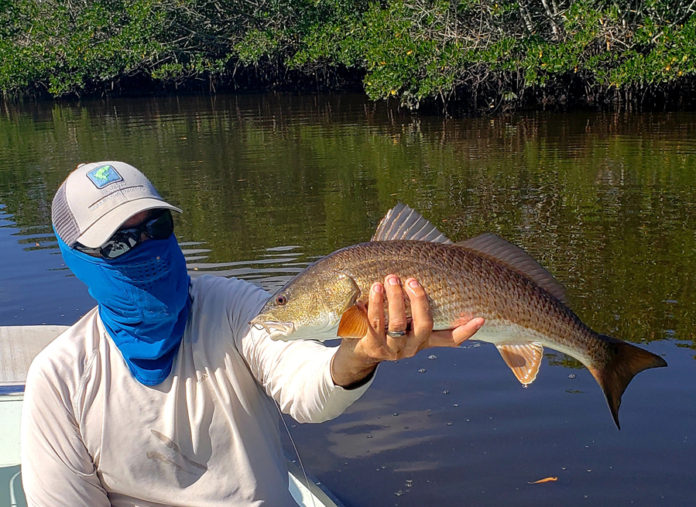Written by: Evan Jones
All photos by Evan Jones
The Stream to Salt series is designed to help anglers of all abilities identify and overcome specific challenges arising from subconsciously applying “trout brain” to saltwater fly fishing. The goal is not simply to provide a list of new habits to memorize, but also to foster a deeper understanding of why some of the habits and assumptions developed while trout fishing can be detrimental in the salt, and how to adjust.
While we have discussed several reasons to change locations before changing flies in previous chapters, that’s not to suggest fly selection isn’t important when fishing salt water. After covering enough water to find active fish, you still need to use an effective fly in order to be successful.
Problems often arise, however, when trout anglers try to judge which flies will be effective in salt water, since their selection criteria has been so heavily influenced by experience on trout streams. While there is some overlap, one crucial difference is that trout flies are naturally carried by the current, while saltwater flies must be manually propelled by stripping in line. That means saltwater flies must perform in ways that freshwater flies don’t, and so trout anglers might not have a good intuitive sense for what constitutes a well-designed saltwater fly. Here are three specific aspects of effective saltwater fly design to watch for when choosing a pattern:
Baitfish that Swim Upright

Looking like a baitfish isn’t enough; your fly has to move like a baitfish as well, maintaining an upright orientation throughout the retrieve. Flies that tilt at various random angles as they move won’t attract nearly as many bites, which is a common issue with lightly-weighted baitfish patterns that have tall, thin bodies, such as EP Baitfish or Sparkle Minnows. The best ways to ensure your flies swim straight are to either buy them from reputable sources, or if you’re tying them, try folding a small piece of lead wire in half and using thread wraps to secure it to the underside of the hook shank as a first step. The added weight will serve as a “keel” on your fly and ensure that it always rides upright.
Mono Weedguard

A lot of anglers only think about adding weedguards when trying to avoid snagging actual weeds suspended in the water column, but weedguards serve another important purpose, even in the cleanest water: they keep your fly from suddenly losing momentum to a snag while a fish is watching. Any little irregularity on an otherwise-smooth bottom can potentially stall your fly during the retrieve, and even the slightest pause can turn fish off. Snagging your hook point on submerged debris can also dull it, or even fold it over completely, forcing you to waste time repairing or replacing the fly altogether.
While there are many styles of weedguard, I find that a doubled piece of 25-pound test tied on top of the hook shank, as demonstrated at 0:48 in the video below,by Tim Flagler, provides the ideal combination of stiffness and flexibility for most applications.
Smaller, Finer-Wire Hooks
One of the joys of saltwater fly-fishing is leaving your bifocals and size 22 emergers at home, and using flies that can actually be seen by unaided human eyes. It’s important to keep in mind, however, that bigger isn’t always better. The more angling pressure saltwater fish endure, the smaller flies they tend to prefer (just like trout), as evidenced by the growing number of Bahamian bonefish guides recommending clients bring flies down to sizes 8 and 10, or the fact that most Keys tarpon flies are now under 3 inches long, smaller than a typical trout streamer. If you’re heading to a popular spot, be sure to bring some smaller flies.

Another aspect of hook design to consider is the thickness of the wire. While it might seem that thicker wire would always be preferable given its greater strength, thicker hooks don’t penetrate as well, which can be an issue for certain saltwater species with notoriously hard mouths, such as tarpon. Try experimenting with hooks of different wire gauges until you find one that sticks well and only breaks occasionally: losing a few fish to a broken hook that was too thin is still preferable to failing to connect at all while using a hook that is too thick.
Evan Jones is the assistant editor of the Orvis Fly Fishing blog. He spent a decade living on the Florida coast and now makes his home on the Front Range of Colorado.
Credit: Source link































